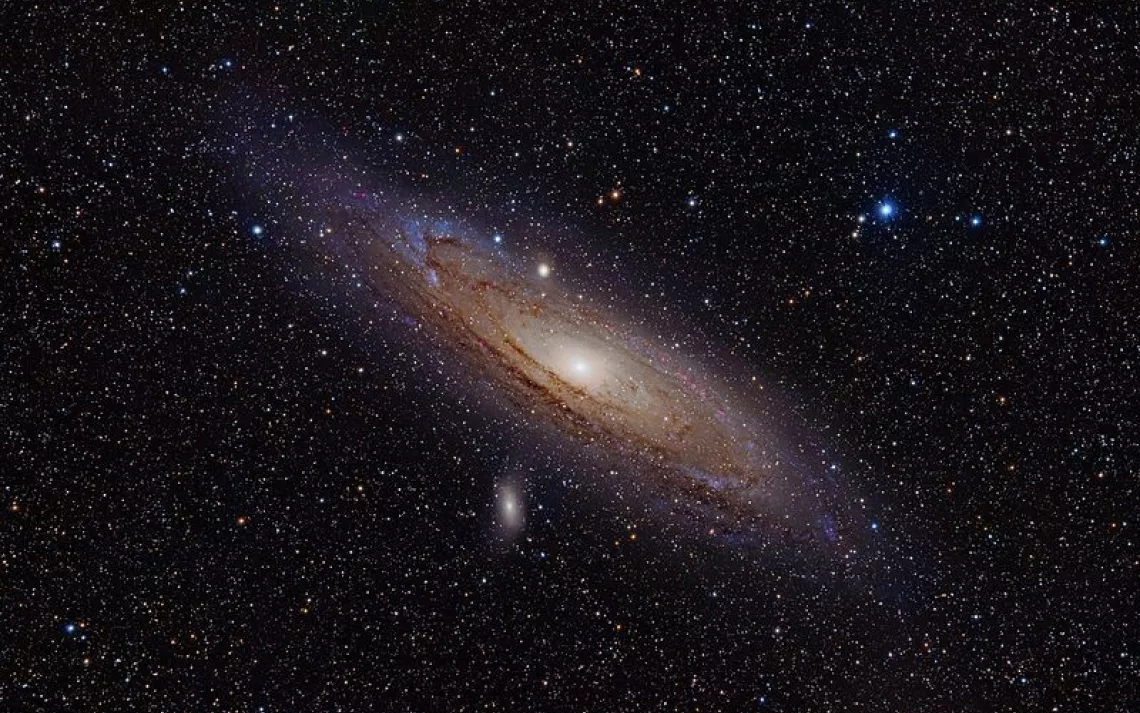September Observing Highlight: Fall Constellations

In autumn the Andromeda Galaxy shines the brightest. | Photo by Adam Evans
Look skyward on the eve of September 2, and you might see a very slender crescent moon near Jupiter, making for a beautiful twilight scene. But it will be easier for you to spot the moon the next night, when it stays above the horizon a little longer after sunset. On that evening, it will be to the left of Venus and Jupiter. On September 8, you’ll find a half-lit moon just above Saturn. Mars will be the brighter planet to the lower left.
Mars will be crossing the Milky Way throughout September and encountering deep-sky wonders, such as the globular cluster M19 on September 6. On this evening, Mars will be less than a degree above the ancient cluster of stars. Point your binoculars or a telescope at the reddish planet in the southwest, and you should see a fuzzy smattering of stars just below it. On September 30, you can use a telescope to see Mars just 10 arcminutes away from the star cluster NGC 6553. Another cluster, NGC 6544, is one degree away to the upper right, and if you keep scanning in the same direction, you’ll spot two famous nebulas, the Lagoon and Trifid Nebulae, known as M8 and M20. As summer draws to an end, this rich part of the Milky Way won’t be visible much longer.
This month’s full moon occurs on September 16, at 2:05 P.M. CDT. If you are in the Eastern Hemisphere on this date, you’ll be able to catch a penumbral lunar eclipse. Eclipses come in pairs, and a solar eclipse visible in Africa and the Indian Ocean will occur on September 1. During the eclipse, the moon will be close to apogee—its farthest point in its orbit around the earth, so when it passes in front of the sun, it won’t block the whole disk. This is known as an annular eclipse, and you’ll need eye protection to view it safely.
Autumn officially begins with the equinox on September 22 at 7:21 A.M. PDT. The sun will be crossing the equator on its way to warming the Southern Hemisphere, where spring will be starting. When you see the sun on the horizon at sunrise and sunset on the equixox, you are looking directly east and west, respectively.
The onset of fall marks a new season of constellations for you to view. Pegasus is an easy one to pick out because of its great square shape. You can also see Andromeda and Perseus, the closest large galaxy to the Milky Way, with its famous double cluster of stars, and finally Auriga with its twinkly star Capella.
 The Magazine of The Sierra Club
The Magazine of The Sierra Club



